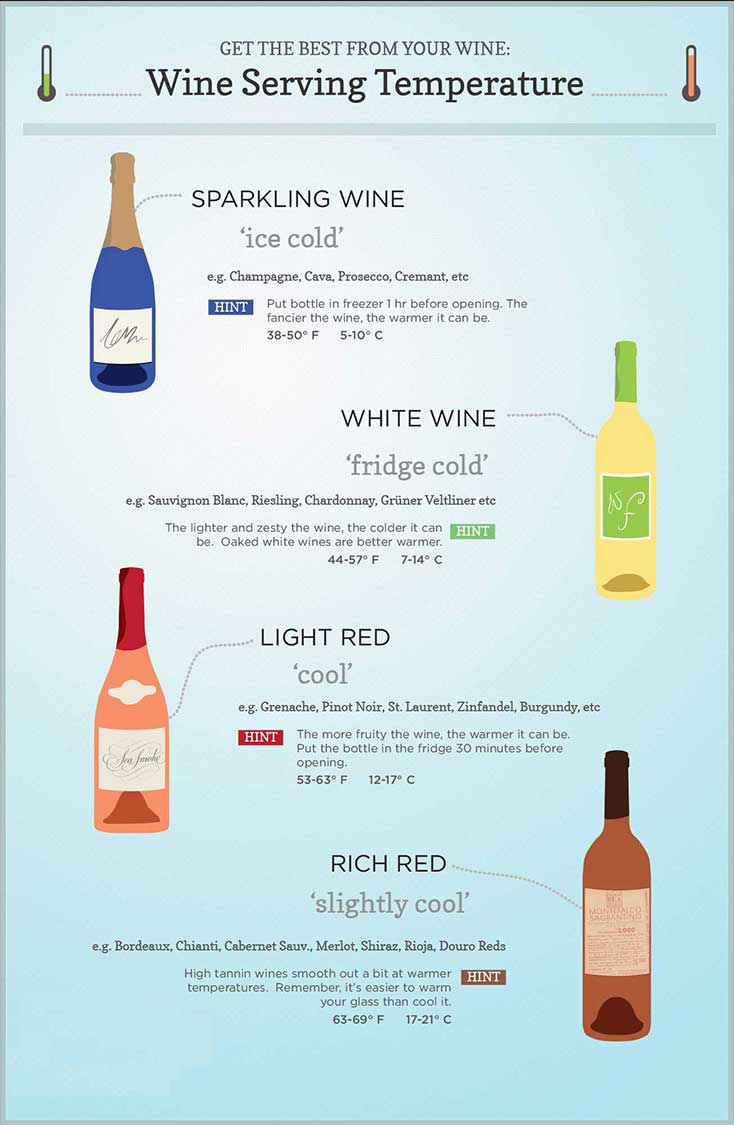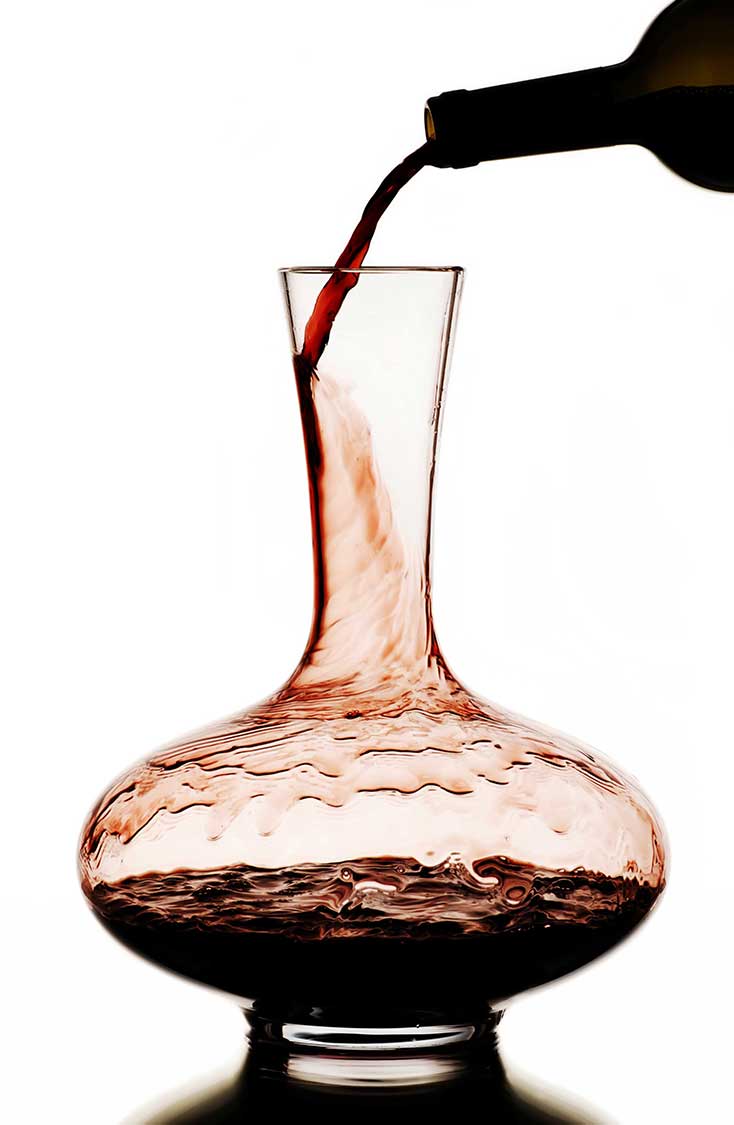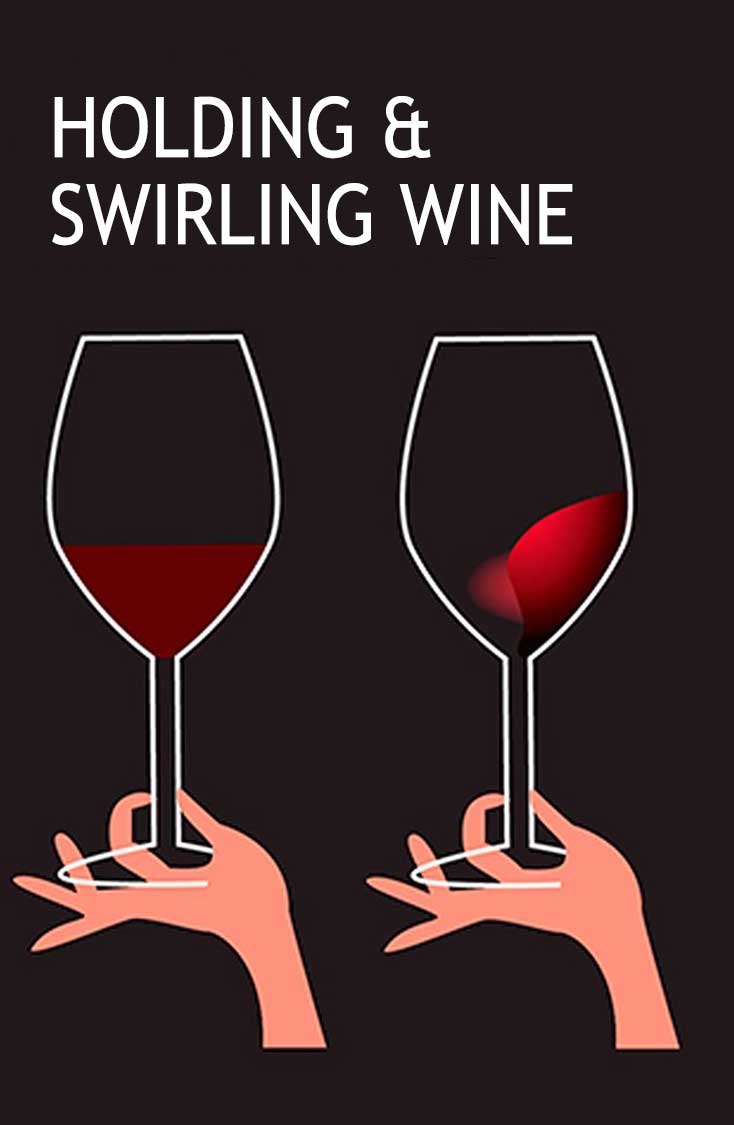Storing
The basic requirements are a cool, dry, dark space that is shielded from direct sunlight and vibration so that the wine can settle naturally and maintain its balance. It is important to maintain a steady temperature (55-65º F/12.5-18º C is ideal). Wine that is stored at room temperature ages faster than wine stored at proper temperature; this will impede its development in the bottle. Good wine that is stored in the proper conditions develops complexity. This is especially true of Classified Bordeaux. Laying a wine down in a cellar that is temperature and humidity controlled will allow one to age a wine indefinitely (in theory). Time: “The older the better.” This is the assumption when it comes to wine, however this mainly pertains to red wine. Time changes the taste of the fruit flavours in a wine as well as reducing the acidity and tannins. A well-aged wine has fruit notes that lean more towards dried fruits and stewed fruits; they are much more subtle. As the acidity and tannin are reduced, the wine becomes rounder and smoother. A great example of two wines that taste even better than ever at the 10 year mark are Reserva Rioja and Barbaresco.
Serving
White and sparkling wines are best served well-chilled (40-55º F/4.5-12.5º C ), with sparkling wines and lighter whites at the lower range of the scale and fuller-bodied, richer whites, such as Chardonnay, at the upper range. Avoid over-chilling, especially with high-quality whites, because it will blunt the complexity of the wine’s aromas and flavours. Red wines should be served at cool room temperature (55-65º F/12.5-18º C), with lighter, fruitier reds (e.g., Beaujolais and Pinot Noir) and wines with a high alcohol content (over 13%), in particular served at the lower range to better balance the aromatic effects of the alcohol. Fuller-bodied varieties (e.g., Cabernet Sauvignon, Zinfandel and Syrah) should be served at the upper range. Note. If red wine is served at too warm a temperature, the alcohol will evaporate quickly; temperatures that are too low will affect the tannins, making them seem harsh.
Breathing
Opening the wine and exposing it to air, “breathing”, changes the quality of a wine by unlocking hidden flavours. Decanting is performed on older, mature wines to gently separate the sediment from the wine. This will greatly enhance one’s wine experience. The decanted wine can sit from anywhere in between 5 minutes to 2 hours; high tannin wines benefit from longer wine decanting (up to 2 hours).
Drinking
Wine glasses vary in size, shape and design, but good glasses will be clear (to view colour and clarity), not too thick (so the glass does not obstruct one’s contact with the wine), and with a stem long enough so one can hold the glass without handling the bowl (which raises the temperature of the liquid). As a rule, the bowls of red wine glasses are larger and wider than those for whites. Wine should be poured up to the widest part of the glass; it will benefit from aeration after being in the bottle for some time. Most good wine glasses are tulip-shaped to channel the aroma and flavour essences of the wine into the nose, as this is where the majority of wine experience occurs. Swirling not only continues the aeration of the wine, but it also vaporises some of the wine, enhancing the bouquet further.
Finishing & Preserving
Exposure to air causes wine to age. If a bottle of wine is not finished in one sitting, the following actions will minimise the effect of oxidation and will preserve what is left: Vacuum Corking, Purging the bottle of oxygen (“Gassing”), Storage in a smaller bottle, and Refrigeration. Unfinished white wines, tightly corked and refrigerated, should maintain their character for up to four days, while reds will begin to degrade after 48 hours.

Serving
White and sparkling wines should be served well-chilled (4.5-12.5º C) with red wines best served at cool room temperature (12.5-18º C).

Breathing
Decanting (or “breathing”) the wine gently separates the sediment from the wine whilst unlocking hidden flavours, greatly enhancing one’s wine experience.

Drinking
Swirling not only continues the aeration of the wine, but it also vaporises some of the alcohol from the wine, thereby opening up the wine and releasing intense aromas.
